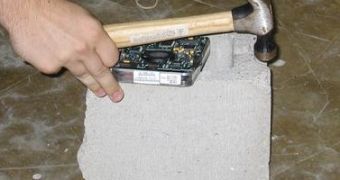One of the most annoying things is when you delete a folder in which you later realize that you had important information. From that point on a struggle goes on to get back whatever it was that you lost. So, first things first, you have to get some piece of software to help you do the trick. That being said, you surf the Internet, in search for the best data recovery software. Since the Internet has become a very user-friendly environment, what you have to do is just go to google.com and search for "data recovery software", letting your fate in the hands of the trusted search engine.
You shouldn't be surprised that you have a lot of choices, in the number of millions, as a result of your search, but the main problem is which one should you choose for the job at hand. They all say that they have the best success percentage, that they recover any type of files you know, and even some you've never heard of. But here's the snag: in order to use the software, you have to buy it. Of course, the software is usually available in an x-day trial period so you can test it, but it also means that most of its features aren't available.
Then there is the thought of "if I use one software program, and it doesn't work, can I use a second one?" The answer is simple, probably not, when a software program accesses the sector(s) on the hard drive where information used to be, they try to recover it by making the data visible to the operating system. Hard drives have a simple way of dealing with deleting data, they don't actually go out and erase the data by overwriting the zones with 0 logic, that would mean that deleting a file would take just as long as it would take to copy it. So the easy way is to write over the, let's call it, pointer that tells your OS where your file or folder is stored, by deleting this pointer, the hard drive knows that between sectors 1 through 10 you can write data, even though data already exists there, it gets overwritten.
So the programs try to remake the pointer visible to the OS, and that all of the information it pointed to doesn't get overwritten. Once one program messes with that information, there is little you can do, at home, about it. This is where Seagate comes to the rescue with their File Recovery for Windows software. This program does the same tasks as the rest of them, which includes recovering files types such as Word, Excel, PowerPoint, Outlook PSTs, databases, AutoCAD, Microsoft SQL, MPEG, AVI, MP3, and photo file formats from FAT12/16/32 and NTFS file systems. What's the catch then? It can be downloaded for free from Seagate's website and with it examine the hard drive in order to find out if a "successful recovery is possible". This way, users know for sure if the information can be rescued, before actually purchasing the software.
Kevin Halladay, I.T. manager of the Sundance Ski Resort in Utah said: "I called a handful of drive recovery services and was given estimates ranging from $700 to $8,000 to restore my data with a wait of at least four days. I called Seagate Recovery Services about sending the drive in for recovery, and their client service representative suggested that Seagate's D.I.Y. software was the ideal solution for my data loss situation. I downloaded the software and recovered all of my data, and Seagate saved me hundreds, if not thousands of dollars. The software is easy to use, very intuitive and provided a full recovery for a fraction of the cost of an in-lab solution. The product is a true bargain."

 14 DAY TRIAL //
14 DAY TRIAL //